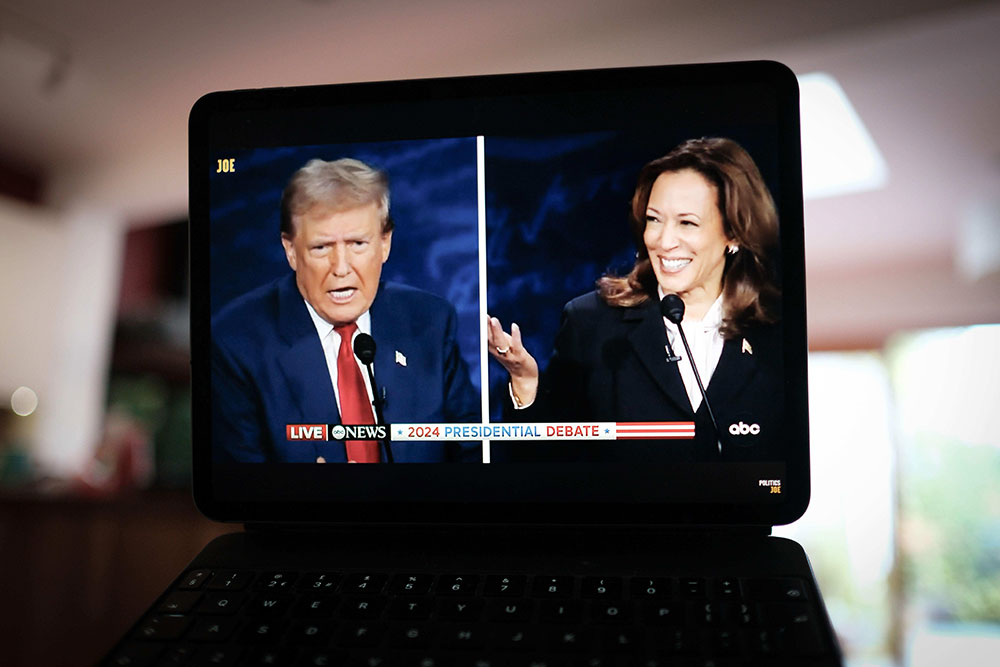 While next week’s US Presidential Election is an important battle for the heart and soul of the USA, it is also a battle of two completely different brands as TBWA’s Paul Fisher explains.
While next week’s US Presidential Election is an important battle for the heart and soul of the USA, it is also a battle of two completely different brands as TBWA’s Paul Fisher explains.
On the eve of the 2016 US Presidential Election, Hillary Clinton held an event in Cleveland, Ohio.
Beyonce performed. As did Jay Z, J-Lo, J Cole, and a host of other artists from elsewhere in the alphabet.
Trump, meanwhile, did what Trump has done every day of his campaign. He held rallies in districts and delivered the same stump speech. Build The Wall. Lock Her Up. Make America Great Again.

While Team Clinton saw out those final 24 hours orbited by a galaxy of megastars, Team Trump flew to meet his public in no fewer than five states; Florida, North Carolina, Pennsylvania, New Hampshire and Michigan. At each stop, the set list remained the same. Build The Wall. Lock Her Up. Make America Great Again.
Once the dust had settled, Donald J. Trump had won four of those five states and, ultimately, the White House.
Campaigning as a brand
Trump understood something that Clinton didn’t- that contemporary democracy is a marketplace, and to win you must sell a simple, consistent and memorable brand. A blunt-force brand that can become embedded in millions of brains through repetition. A brand like Make America Great Again.
Trump’s simple message was easy for the public to absorb and irresistible for content-hungry media to amplify. It’s estimated that Trump enjoyed $2bn in free media coverage in 2016, more than double that of Clinton.
Trump also understood that a powerful brand is essential when selling a contentious product. Many of the world’s most famous brands belong to products associated with obesity, addiction child labour and environmental destruction. The promise carried by a strong, simple and memorable brand can loom larger and longer in the public consciousness than the nuanced misgivings of products they promote.
And that’s especially true in an age of information oversupply. We’re exposed to more messages today than in any point in human history, and yet our biological ability to consume information hasn’t really changed at all.
Studies suggest that our brain has a total capacity of around 2.5 million gigabytes. That’s broadly equivalent to three million hours of digital video. On a given day we can only take in 0.001% of that, around 36 gigabytes. It’s like filling a swimming pool with a teaspoon, and so we’re discerning about what information we choose to engage with, remember and share with others. That’s why simple, consistent and memorable brands are so effective when selling burgers, fizzy drinks or celebrity tycoons.
MAGA effect
Fast-forward to 2024, and Trump is still promising to Make America Great Again, still vowing to punish his ever-growing list of enemies that prevent it from being so.
But if you look a little closer, Trump’s current brand campaign lacks the single-minded messaging discipline that proved so decisive in 2016. His recent rallies are a meandering blancmange of petty grievances, and the lines that cut through tend towards the unhinged; “they’re eating the dogs, they’re eating the cats”. That makes it a harder story for the public to absorb, and a harder message for the media to relay.
And yet, Make America Great Again remains one of the most robust brands in modern political history. But this time, Trump faces an opponent who knows what it takes to land a brand in today’s media landscape.
One of the Harris-Walz campaign’s first acts was to attack Trump’s brand with one simple word — weird. Weird went viral, becoming a powerful anti-brand that grew stronger with every unhinged Trump utterance and every sycophantic MAGA surrogate. While weird didn’t quite destroy the MAGA Death Star, it was enough to suggest that its destruction is possible.
Team Harris have yet to fully land their own simple, memorable brand since those promising early days, but they at least have hit upon a clear messaging strategy. Central to this is “We’re Not Going Back”, a chant that Harris leads at each of her rallies. This statement is strong enough to carry a promise of a better future and open enough to allow people to project their own desires onto it. To quote The Boston Globe’s Renée Loth;“When they chant ‘We’re not going back’, Harris supporters mean they’re not going back to the chaos and corruption of Donald Trump’s presidency. But they’re also not going back into the closet, as some homophobic, transphobic forces in the opposition party would prescribe. They’re not going back to the back-alley abortions. They’re not going back to the back of the bus. And they’re not going back to a time when unaccountable kings ruled the land.”
Brand Harris
Crucially, Kamala Harris also understands how to match message and medium. While Trump persists with his rallies and Fox News appearances, Harris has reached beyond the traditional political ecosystem to present her brand to those who’ve yet to commit to a candidate.
Through appearances on the ‘Call Her Daddy’ podcast, The View and Charlamagne Tha God’s ‘The Breakfast Club’, Harris has been able to put her brand into a different cultural context. Each audience can learn what she stands for and understand how that relates to their own needs and wants.
Simple messaging
Trump won in 2016 by appealing to people’s fears and anxieties, presenting a solution in the form of his strong, uncompromising and anti-establishment brand. Clinton lost, in part, because she didn’t believe she had to present herself as a brand at all.
Kamala Harris accepts an uncomfortable truth that Hilary Clinton rejects — in politics, it’s simply not enough to be yourself. Like Trump, Harris knows that democracy is a marketplace that can be won by selling a simple, appealing brand to as broad an audience as possible.
But unlike Trump, Harris is selling a brand that appeals to people’s hopes and aspirations, rather than their fears and anxieties. Hers is a brand that promises progress, and an America that can move forward together. An America that is not going back.
Like 2016, the 2024 US Presidential Election will come down to fine margins. But unlike 2016, Trump has a worthy adversary in the battle of the brands.
It’s a contest between two strong, memorable and diametrically opposed visions for Brand America, and it’ll be an outcome that – one way or another – will change the world.
Paul Fisher is Chief Strategy Officer of TBWA\Ireland.





















